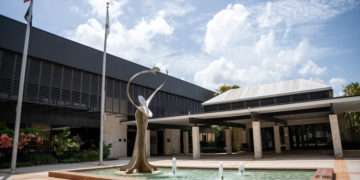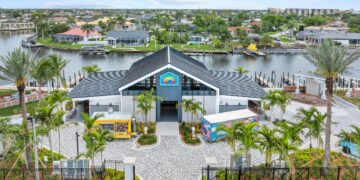Against the backdrop of a slate of “Live Healthy” bills totaling almost $800 million championed in the state Legislature this year by Senate President Kathleen Passidomo, CEOs of some of Southwest Florida’s largest health care networks are focusing on the challenges and opportunities brought on by the region’s unprecedented growth.
Florida gains 300,000 new residents per year, according to a press release announcing passage of the first part of the Live Healthy legislation in the state Senate, putting a mighty strain on the state’s health care systems. Hospital administrators and medical professionals in Collier and Lee counties are increasingly dealing with an aging population, critical physician shortages and tight capacity in emergency departments and inpatient facilities.
For health care consumers, the result is long waits for appointments with primary care providers and specialists. New patients can wait six months or even longer—if the provider is taking new patients at all. Emergency rooms are often at capacity as patients, unable to see primary care doctors, go there for nonemergent care. According to the March of Dimes, 19.4% of Florida counties are classified as “maternity care deserts,” meaning women have to travel more than 30 minutes for labor and delivery services.
Gulfshore Business spoke with system CEOs for four of the region’s largest nonprofit and for-profit health care systems providing acute care and primary care on either an inpatient or outpatient basis—NCH, Physicians Regional, Healthcare Network and Lee Health—regarding their priorities, opportunities and challenges and how Live Healthy legislation could affect Southwest Florida.
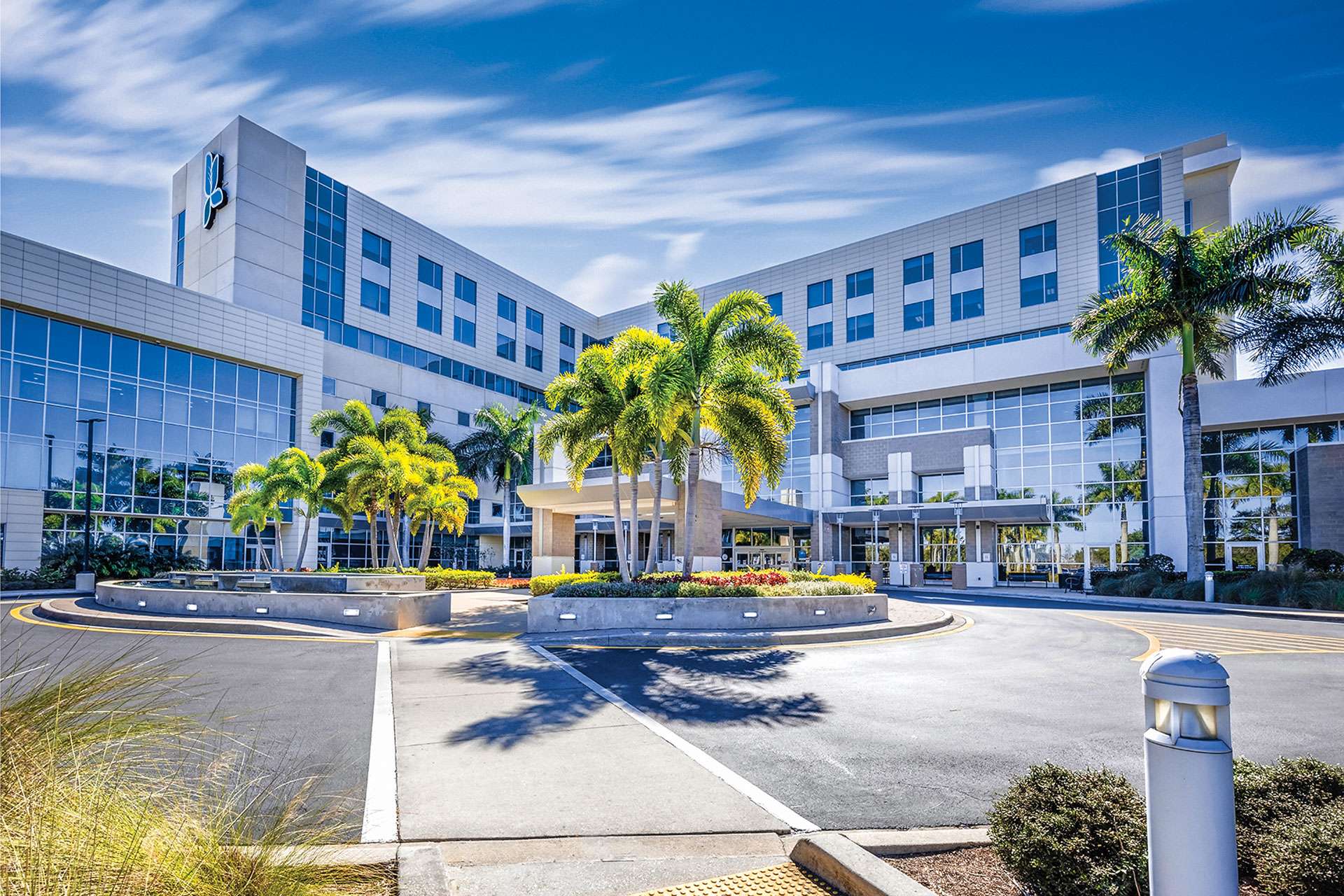 For Naples Comprehensive Health, the last 18 months have been a game of “hurry up and wait” as CEO Paul Hiltz oversees plans to build the $200 million R.M. Schulze Family Cardiovascular and Stroke Critical Care Center housing the Rooney Heart Institute and the Wingard Stroke Institute next to NCH Baker Hospital downtown.
For Naples Comprehensive Health, the last 18 months have been a game of “hurry up and wait” as CEO Paul Hiltz oversees plans to build the $200 million R.M. Schulze Family Cardiovascular and Stroke Critical Care Center housing the Rooney Heart Institute and the Wingard Stroke Institute next to NCH Baker Hospital downtown.
In February, after a protracted rezoning process, the nonprofit NCH—recently rebranded Naples Comprehensive Health, from Naples Community Hospital—won preliminary approval from the city of Naples to construct the five-story center.
As the region’s population ages and as heart disease continues to be the No. 1 cause of death in America, cardiac and stroke care are among the biggest priorities for NCH, as well as other large health care systems. Hiltz sees the new care center as essential to enable NCH to deliver high-quality health care. “If a patient right now comes to see a doctor (cardiologist) and then needs to come to the hospital for a test or a procedure, there’s a lot of walking around for both the patient and the team of caregivers,” Hiltz says. “We’re trying to put all the players in one building so the … doctors and nurses can take care of everyone in one site.”
Hiltz predicts the new care center will be “an iconic building in health care in America. We think it will help us recruit and retain top-tier talent here.”
NCH has recruited 13 new cardiologists in the past year, following its recruitment of Robert Cubeddu, M.D., to NCH in 2021. Cubeddu joined NCH from Cleveland Clinic Florida to serve as the Brynne and Bob Coletti Endowed Chair for the President of the Rooney Heart Institute. The plans for the new center attracted him to NCH, and he thinks it will be an “exciting destination” to physicians across all specialties. “My biggest draw was the vision and the need for high-quality care and the support of the community,” Cubeddu says. “The board of trustees and the executive leadership team are really focused on investing in quality for patients and the patient experience.
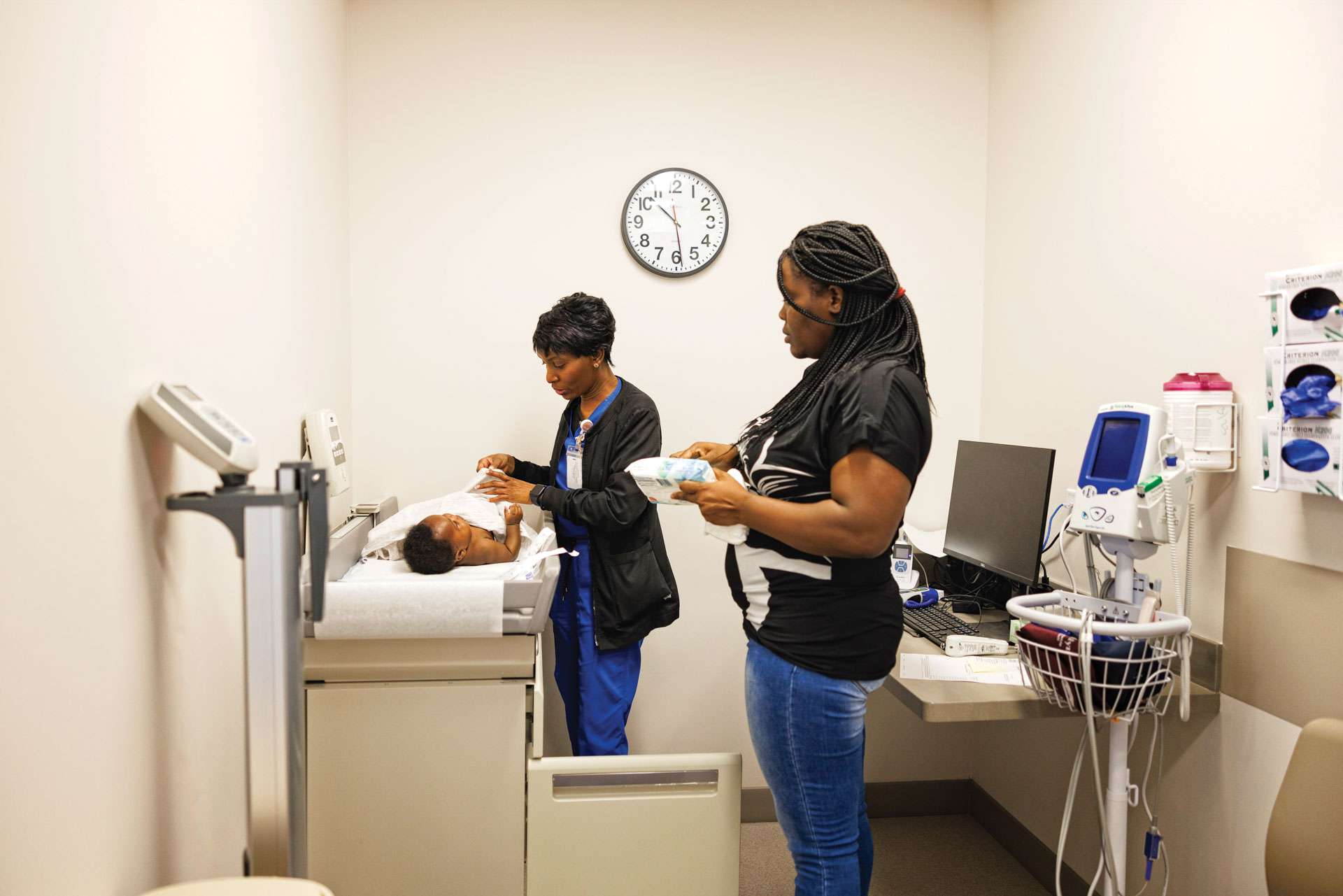 “We are investing in cardiac, vascular and stroke,” he says. “We’re investing in orthopedics, pediatrics and oncology. You can’t be No. 1 in everything, [but] we’ve identified key service lines that are highly strategic and thoroughly thought out, and largely driven by the demands of the community.”
“We are investing in cardiac, vascular and stroke,” he says. “We’re investing in orthopedics, pediatrics and oncology. You can’t be No. 1 in everything, [but] we’ve identified key service lines that are highly strategic and thoroughly thought out, and largely driven by the demands of the community.”
Asked about the Live Healthy legislation, Hiltz said he is grateful to Passidomo for her support of legislation that will upgrade service. Hiltz, who serves on the Board of the Florida Hospital Association, and other health care leaders expect the legislation to expand availability of advanced birthing centers across the state, which would allow cesarean sections to be performed, and urgent care centers adjacent to emergency departments. NCH offers obstetric/maternity care services and operates walk-in centers in Naples, North Naples, Marco Island and Bonita Springs.
“We want to improve access and be really careful that we don’t downgrade the care,” Hiltz says. “Freestanding birthing centers are great until there’s a problem, and then the patient has to be transported to one of our hospitals. We need to all come together and make sure the intentions are achieved with whatever we design.”
As Collier County’s population has surged these past two years, Physicians Regional Healthcare System has expanded its bed capacity by 70%.
“We’re growing dramatically, and we want to continue to offer a very high level of services to the residents of Southwest Florida,” says Scott Lowe, CEO of Naples-based Physicians Regional—which is owned by Franklin, Tennessee-based Community Health Systems, one of America’s largest for-profit hospital operators. “We did a bed expansion at our Pine Ridge campus, a bed expansion at the Collier Campus and added a third location with our north campus.”
With the health care labor pool tight, Lowe added, lack of affordable housing hampers his ability to recruit and retain talent across all areas, including physicians. “The demand is increasing, but the labor pool is not. I think that is our biggest challenge, but we continue to offer a phenomenal level of service. And that’s not just the physicians: It’s the support teams, it’s the food services, the security officers, the imaging departments, the X-ray techs, the CT techs. Every one of those are critical components.”
 When it comes to opportunities and innovation, Lowe pointed to Physicians Regional’s cardiac program. “The open-heart program and the cardiovascular program, launched in 2020, have seen tremendous growth,” Lowe says. “We have been able to partner with three cardiovascular and cardiothoracic surgeons—doctors Scot Schultz, Dennis Stapleton and Brett Beecher—to develop that program. We’ve got a structural heart program that we launched about 18 months ago. We added a STEMI (ST-segment elevation myocardial infarction, the most severe type of heart attack) program at the Collier campus, which is a huge win for that community because time is of the essence for cardiac care. If you’re coming from Marco Island, prior to about 18 months ago, you had to go to downtown NCH or to our Pine Ridge hospital. To be able to start that immediate cardiac intervention or cardiac care at Collier could be a lifesaver.”
When it comes to opportunities and innovation, Lowe pointed to Physicians Regional’s cardiac program. “The open-heart program and the cardiovascular program, launched in 2020, have seen tremendous growth,” Lowe says. “We have been able to partner with three cardiovascular and cardiothoracic surgeons—doctors Scot Schultz, Dennis Stapleton and Brett Beecher—to develop that program. We’ve got a structural heart program that we launched about 18 months ago. We added a STEMI (ST-segment elevation myocardial infarction, the most severe type of heart attack) program at the Collier campus, which is a huge win for that community because time is of the essence for cardiac care. If you’re coming from Marco Island, prior to about 18 months ago, you had to go to downtown NCH or to our Pine Ridge hospital. To be able to start that immediate cardiac intervention or cardiac care at Collier could be a lifesaver.”
As with other large networks in the area, Physicians Regional offers a robust telemedicine practice—a focus of the Live Healthy legislation. “I think our patient population still prefers to meet their physician and be able to interact and talk,” Lowe says. “But if we can offer a telemedicine visit that same day, that’s a win.” Another growth area is orthopedics, with more than 3,000 cases across the Pine Ridge, Collier and North (formerly Landmark) campuses anticipated this year.
Physicians Regional does not provide maternity care, so when it comes to the Live Healthy legislation, Lowe is focused on urgent care. “I think urgent care and walk-in clinics do a good job of decompressing the higher cost of emergency room care. That being said, we need to make sure that we’re educating our patient population on when and where to go. The ERs are there for anybody and everybody at all times, but the more we can have our patients established with a primary care physician, they could just have a better understanding of what they may need.”
One of Lowe’s biggest concerns is mental health services, also a focus of the Live Healthy legislation. “David Lawrence Centers for Behavioral Health do a phenomenal job of trying to keep up with that, but they have limited resources, as well,” Lowe says. “That is also a national issue, not just Southwest Florida.”
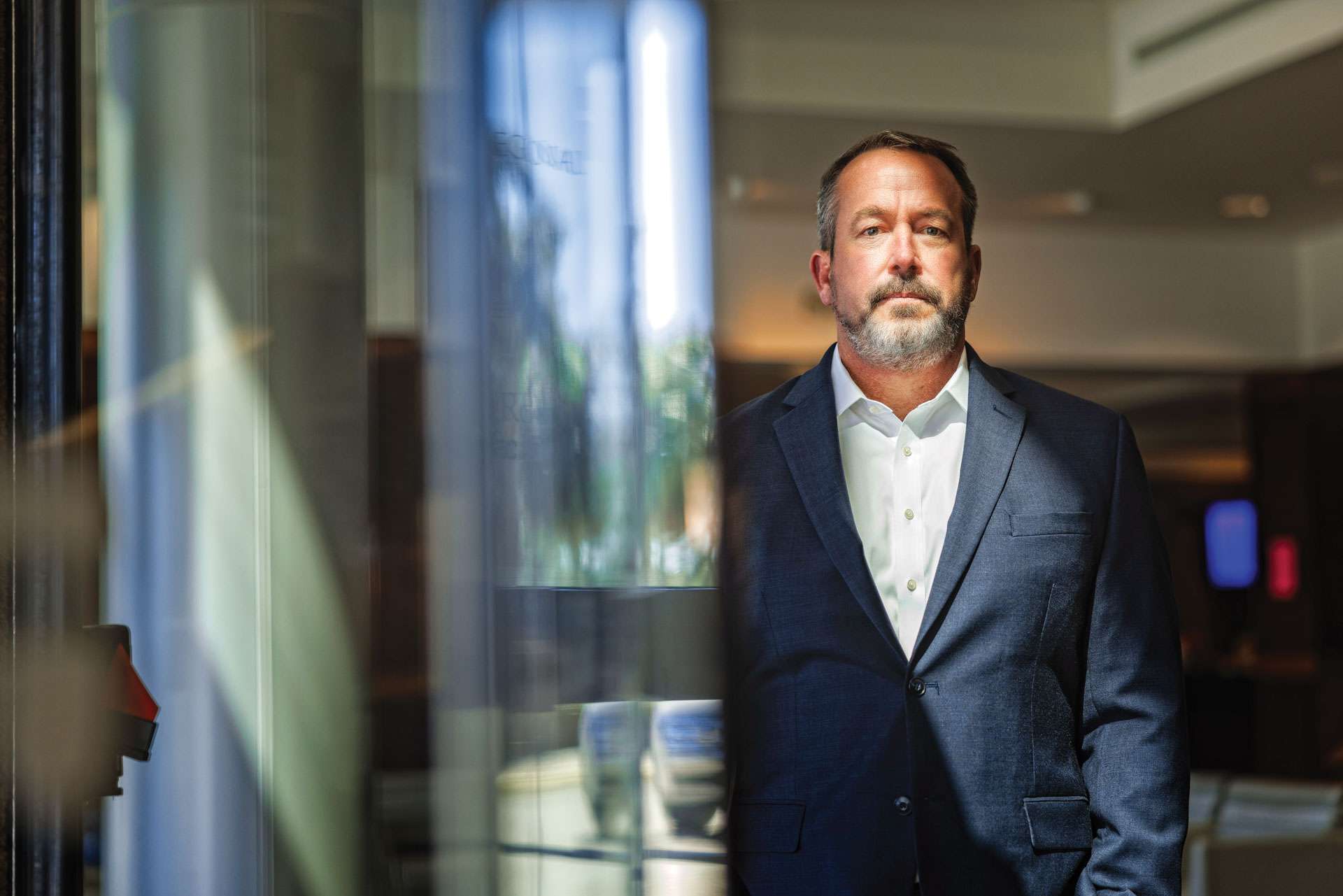
As the only Federally Qualified Health Center designated by the Health Resources and Services Administration in Collier County, Healthcare Network primary care and dental clinics see patients including the uninsured. Within Florida, there are 54 FQHCs.
Founded 47 years ago as a community health center for migrant farm workers, Healthcare Network, based in Naples, has grown to include 10 clinics that served more than 50,000 adult and pediatric patients in 2023. The newest clinic to date, the Nichols Community Health Center, opened in 2020.
“We see anyone, no matter their financial status, or whether they have insurance or not,” CEO Jamie Ulmer says. “But our model is different in that it would not be sustainable if we weren’t diversified to see patients who do have insurance, people that have Medicaid, Medicare and, of course, those who fit our sliding-fee scale.”
In addition to providing care for patients regardless of ability to pay, Healthcare Network’s mission is also to serve those in geographic areas of the county that have typically been underserved.
Ulmer described the area where Immokalee Road and Collier Boulevard intersect as an example, and said it represents one of the network’s greatest challenges: access to care.
“If you travel east on Immokalee, you’ll come to a sharp curve that’s called the Orange Tree area, and there is not one doctor or pediatrician from that intersection all the way to Ave Maria and Immokalee, [which] is the fastest-growing area of Collier County,” Ulmer says. “Now, a person literally has to get off their job, drive 30 minutes to an hour, pick up their child, drive 30 or 45 minutes, have them see a doctor to get them back in school if they’ve had a sick day, then drive all the way back—and that’s a whole day.”
In order to help fill that void, Healthcare Network is currently conducting a capital campaign to build a $15 million, 20,000-square-foot facility in the Orange Tree area near Immokalee. In late January, Healthcare Network also received $1.75 million in appropriation funds from the state for the facility; groundbreaking is expected to take place in early April with an estimated completion of December 2024.
For health care in Collier County in general, Ulmer said another challenge is reimbursement rates for physicians, a challenge that can help contribute to the worsening physician shortage.
He said that HCN sees approximately 60% of all children in Collier County, and that 65% of those children are covered by Medicaid.
“The reimbursement rate for Medicaid is about $20 to $30 for a pediatrician with his or her own business, and if they see them in Collier County, they’re most likely seeing some that are on Medicaid because of the sheer volume,” Ulmer says. “If you’re only getting $20 to $30 on the reimbursement for them visiting you, you would have to see almost 50 to 60 kids a day to make that sustainable for you to pay your overhead and live, especially in Naples. And that’s not a quality of life that you would be able to sustain, or potentially not even be able to provide a quality of care that you would need to provide with that volume of visits.”
Ulmer said he is concerned that if the state does not address reimbursement rates, which have not changed over the last 20 years, “we’re going to see more and more primary care providers going out of business or deciding to go to another state. We have taken over two pediatric offices within the last four months because they said they can no longer do it.”
Will the Live Healthy legislation help address any of these concerns?
“We expect it to be able to address some of these complexities and hopefully some of these reimbursement rates,” Ulmer said during this interview in early February, before the House took up the bills. “We expect it to help address health disparities, promoting health equity and ensuring all Floridians have access to care no matter what their status is. We’re excited about what [Passidomo] is trying to do, as she has seen that health care is a very big challenge here in the state.”
 Ulmer said that while Live Healthy is “not specifically designed” to address reimbursements, he hopes they could be addressed indirectly through programs that could provide funding for FQHCs that take part in programs allowing medical students, nurses, nurse practitioners or physicians’ assistants to rotate through their facilities for training.
Ulmer said that while Live Healthy is “not specifically designed” to address reimbursements, he hopes they could be addressed indirectly through programs that could provide funding for FQHCs that take part in programs allowing medical students, nurses, nurse practitioners or physicians’ assistants to rotate through their facilities for training.
The start of 2024 saw Lee Health in Fort Myers exploring a major change in its business structure: converting from its current model as a publicly run health care system to a private nonprofit health system, which was the operating structure for its first 50 years. In 1968, the system began operating as an independent special health care district created by the Florida Legislature and governed by a publicly elected board of directors, according to the system’s website.
Lee Health retained the Chicago-based consulting firm Kaufman Hall in late 2023 to conduct an evaluation and provide a report by late February, with the Lee Health board then having 120 days to review and consider the options. The system also held a series of public meetings to receive feedback from the public. The next step would be to work with the Lee County Commission on terms and timelines.
The system, which consists of four acute-care hospitals and two specialty hospitals, is one of the largest public hospital systems in the country, and provides care to all patients regardless of ability to pay.
Lee Health President and CEO Larry Antonucci said the “safety net” status will remain the same, regardless of the potential change in structure, with the system entering into an “enforceable agreement” with the county to ensure the provision of care.
“Our overall ‘community benefit’ has averaged $150 (million) to $170 million a year,” he says. “It varies year to year, and that’s net of the taxes we’re not paying as a not-for-profit. So, there is significant community benefit through caring for the uninsured, the under-insured, Medicaid shortfalls, etc.”
Antonucci said the system is exploring the conversion in order to “compete on an even playing field” with increasing competition in the community for health care. The ability to even explore the conversion was made possible by a bill that passed the Florida Legislature last year. By converting back to a nongovernmental not-for-profit, the system would be able to work outside Lee County, be more of a regional presence and form joint ventures or partnerships.
“We’ve been extremely successful, and we want to continue to be successful so that we can continue to reinvest in the community,” Antonucci says. “We plan to invest $750 million in this community in the next five or so years by improving access and building facilities. We cannot do that without having an adequate margin. It’s really that simple. Every dollar we make above our expenses, we reinvest in the community. So, if conversion is the best option, it will assure the community that yes, we will be able to continue to do this.”
And with the conversion exploration in the background, Lee Health finds itself dealing with the same ongoing challenges faced by the other large systems in the region, and with some of the same opportunities—including an increasing emphasis on its cardiovascular offerings.
In July 2023, Lee Health recruited Malissa Wood, M.D., from Massachusetts General Hospital to serve as vice president and chief physician executive of the Lee Health Heart Institute.
In light of stiff competition for physicians nationwide, what convinced Wood to accept the offer from Lee Health?
“I saw a very unique opportunity to help an incredible system kind of make that quantum leap into the next era of health care, which is going to include value-based care, AI technology, etc., but doing that with education and service to the community,” she says. “We want to be able to deliver the best care to the right patient at the right time in the right place, and I think that this particular health care system with its fundamental values has everything here that we need to do it better and to show the rest of the country that it can be done. I will say that the medical informatics and access to innovation here is the best I’ve ever seen in a system.”
When it comes to issues addressed in the current Live Healthy legislation, especially as related to emergency room diversion, Antonucci said he thinks it is important for the public to be educated on what is appropriate when deciding among an ER, an urgent care center or a physician’s office.
“So, the answer is going to be access, right?” he says. “It’s going to be the ability or inability to get an appointment with your primary care doctor, or if you have a minor, nonemergent issue whether it’s through telehealth. That’s an emerging technology that we want to utilize more. But right now, if you call your physician and say, ‘I’ve got a fever of 104, I think I have the flu,’ they’re going to tell you to go to the ER, and nine times out of 10 it’s probably not the best place to be.”
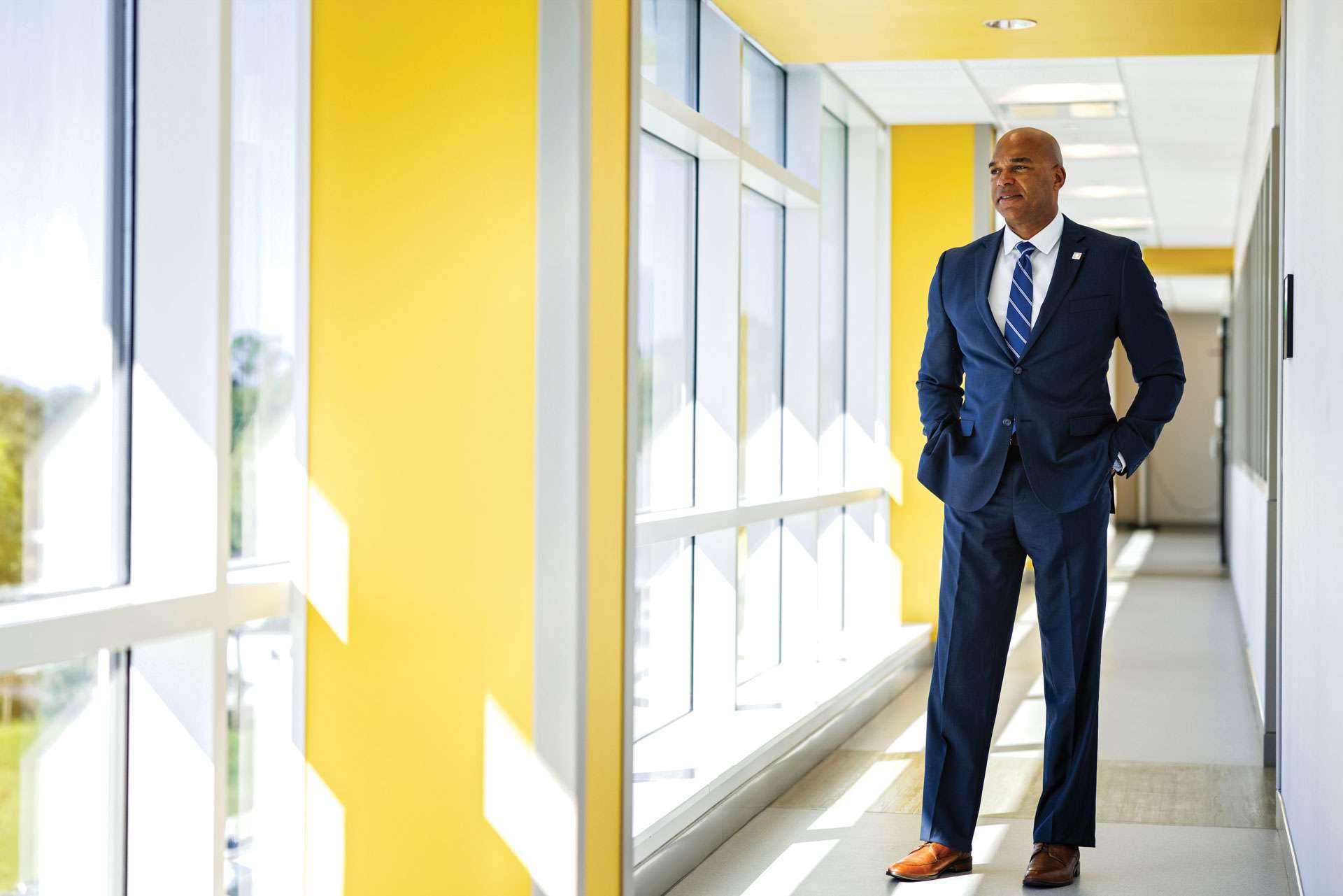
Antonucci said system leadership was working with the Florida House as it deliberated on Live Healthy to “figure out how to get the outcome they want.”
And as another option to ER visits, Lee Health announced in February that it had formed a strategic partnership with DispatchHealth to provide an in-home mobile medical care option with an expanded range from Babcock Ranch to Bonita Springs.
When it comes to the Senate-approved Live Healthy version’s proposed advanced birth centers program, which would allow C-sections to be performed in the centers, Antonucci—who practiced obstetrics and gynecology in Fort Myers for 24 years—expressed concerns that he said are shared by the Florida Hospital Association.
“We’re really concerned about safety and quality,” he says. “If you’re in a freestanding facility without a blood bank, for instance, and you have a hemorrhage in the middle of a C-section, it could be very, very scary.”
Live Healthy
The Live Healthy legislation package led by Sens. Colleen Burton (R-Lakeland) and Gayle Harrell (R-Stuart) and championed by Senate President Kathleen Passidomo (R-Naples) was designed to expand the medical workforce, including physicians, to help increase access to primary care and give consumers a “medical home,” spur innovation and provide incentives for health care systems to expand nonemergency care. Specifically, urgent care clinics that would help shift patients away from emergency rooms, a telehealth minority maternity care program and advanced birth center designations to serve “maternity care deserts” across the state that would give women more delivery options are prioritized in the legislation. The package of legislation, totaling $767 million, passed the Florida Senate in January and passed unamended in the House in late February.
Live Healthy legislation will:
■ Create streamlined licensing pathway for out-of-state providers moving to Florida
■ Expand services to Floridians with disabilities
■ Expand medical residency slots to increase number of physicians in Florida
■ Expand eligibility for LINE program funding (Linking Industry to Nursing Education) to high-performing independent schools, colleges or universities for LPN and RN programs
■ Remove barriers for experienced, foreign-trained physicians to practice in the state
■ Expand access to free and charitable clinics offering free primary and urgent care to help divert care from emergency rooms
■ Increase access to maternity care by authorizing advanced birth centers to perform low-risk deliveries, including C-sections
■ Create a revolving loan fund program for health innovation projects
*Source: flsenate.gov
— Therese McDevitt

